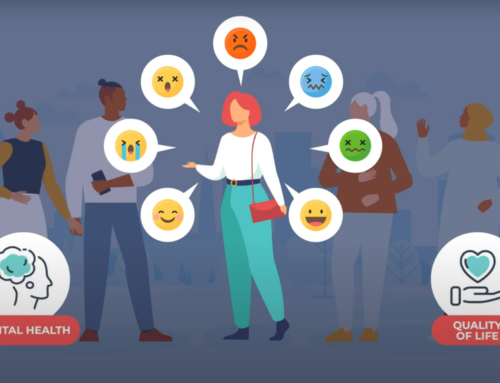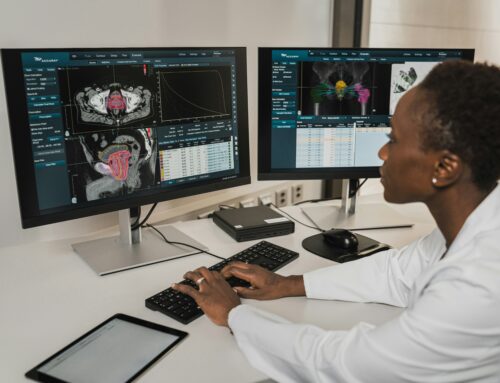The evolution of devices and wearables enabled various ways of measurement at different levels. The range of devices spans from sports-related tools to those certified for clinical assessment. The pervasiveness of specialised sensors is such that, even without intention, most of us have sensors tracking physiological values on our smartphones, smartwatches, or fitness bands. Regardless of the fact that we pay attention and regularly verify such values or not, devices do measure those values. Nonetheless, even if results are not being used directly by us, it is possible that manufacturers or third parties are collecting and making use of it. Beyond concerns on privacy and anonymity, which each person decides to take control of or ignore, the real question is what may be the relevance of such data for users. For instance, what is such data’s relevance for clinical purposes?
Machine Learning and Deep Learning models
Machine Learning (or ML) has become of most importance for data science. This is because it includes a variety of techniques and algorithms for learning patterns from data. ML makes use of statistical and computational methods to automatically identify complex patterns and relationships in large datasets. Those patterns are the starting point to make predictions or decisions based on new input data, thus becoming a central piece on Decision Support Systems (DSS).
Deep Learning is a specific type of Machine Learning that involves training artificial neural networks with many layers of interconnected nodes. Deep Learning models are capable of learning hierarchical representations of data, which allows them to achieve high performance on a wide range of tasks, such as image recognition and Natural Language Processing, among many others. Artificial Neural Networks (ANN) are the building blocks of Deep Learning models. ANNs are mathematical models inspired by the structure and function of biological neurons in the brain. They consist of interconnected nodes that perform simple computations on input data. Furthermore, ANNs are organized into layers that process information hierarchically. Neural networks can process vast amounts of physiological and behavioural data from individuals to provide personalised insights.
By analysing data patterns, neural networks can uncover relationships between different variables. Moreover, neural networks can identify trends that may not be immediately apparent to humans. With such developments, neural networks can also help improve diagnostic accuracy by identifying subtle patterns in data that human observers might miss.
FAITH uses ML aiming to monitor patients’ physiological and behavioural data over time. The objective is to detect changes that may predict the onset of stress-related conditions, such as anxiety and depression. This assumption is based on the fact that, when properly trained, ANNs will be able to predict the likelihood of mental health deterioration or other potential mental health issues. These algorithms can analyse patient data and identify patterns and relationships that may not be so obvious without the analysis of a vast amounts of data, in different modalities from numerous sources. All these methods are imposing a revolution in healthcare. In particular, finding biomarkers, assessing medical condition from multiple sources, and providing insights to support the most accurate clinical decision seem to be very promising fields for medical Data Analytics.
AI and Algorithms: how can Machine Learning support healthcare?
Data Analysis plays a critical role on the usefulness of data. In addition, it could have a notable impact on clinical trials and decision support systems. As a use case, researchers may consider the role that data collection and data analysis play in evaluating mental health, using non-invasive methods, such as physiological data collection and self-reporting with questionnaires.
As devices generate vast amounts of data, depending on the sampling frequency, a clinical trial may produce a large set of big data. Adding to sensors, other data enters the frame, including patient demographics, medical history, and treatment outcomes. As mentioned, Deep Learning algorithms are a subset of ML algorithms using neural networks to analyse large datasets. For instance, ANNs are particularly effective in pattern recognition and classification tasks. This ability makes ANNs ideal tools for Data Analytics in the field of mental health evaluation.
Along with physiological data analysis, Deep Learning can also assist in the analysis of clinician advice and parameters. Clinicians often use standardised assessment tools to evaluate mental health conditions. Moreover, they use different questionnaires for patient health evaluation in mental health decline and depression. FAITH promotes the Explainable AI Analytics over collected data from the Fitbit bracelets. Collected information includes sleep and activity data, along with the self-report over questionnaires. In this sense, the federated approach makes use of data from different sources to increase the metrics and the discovery of mental health biomarkers.
AI and FAITH: data analysis to timely recognition of mental health deterioration
Deep Learning models can analyse medical data and provide insights into a patient’s mental health status. Surely, this can support clinicians in making more informed decisions about treatment options. These models can also provide more personalised care to patients. Data Analysis helps researchers identify patterns and trends in the data, providing valuable insights into patients’ mental state. Nonetheless, Data Analysis must be guided by clinical advice, including variables’ choice, and thus relevant data. Once correlations are evident, the AI considers a patient’s variables, or the transversal analysis of patients’ values across a cohort. Then, it generates biomarkers that will provide insights on a new patient’s data.
The results will become fundamental for Decision Support Systems. Relying on Data Analysis, such systems will help healthcare providers make informed decisions about patient care.
FAITH project adopts different types of algorithms and AI approaches to analyse the datasets acquired from patients. In FAITH, the most important objective is to provide Explainable AI (XAI) reports. Indeed, this could represent a complex task that leads to narrowing the options on algorithms to use. Ideally, we would reach decision trees with each branch properly classified accordingly on variables impacting the final outcome. In fact, this is not always possible to achieve. Some AI approaches are as black boxes to the human observer; it’s impossible to discern the AI’s reasoning behind a certain decision.
An important question remains in the end. Is it more important to explain how a diagnosis is achieved (making XAI a main requirement) or to have the most accurate reliable diagnosis even if an explanation is out of reach?
Author: Fernando Ferreira (PhD), UNINOVA




